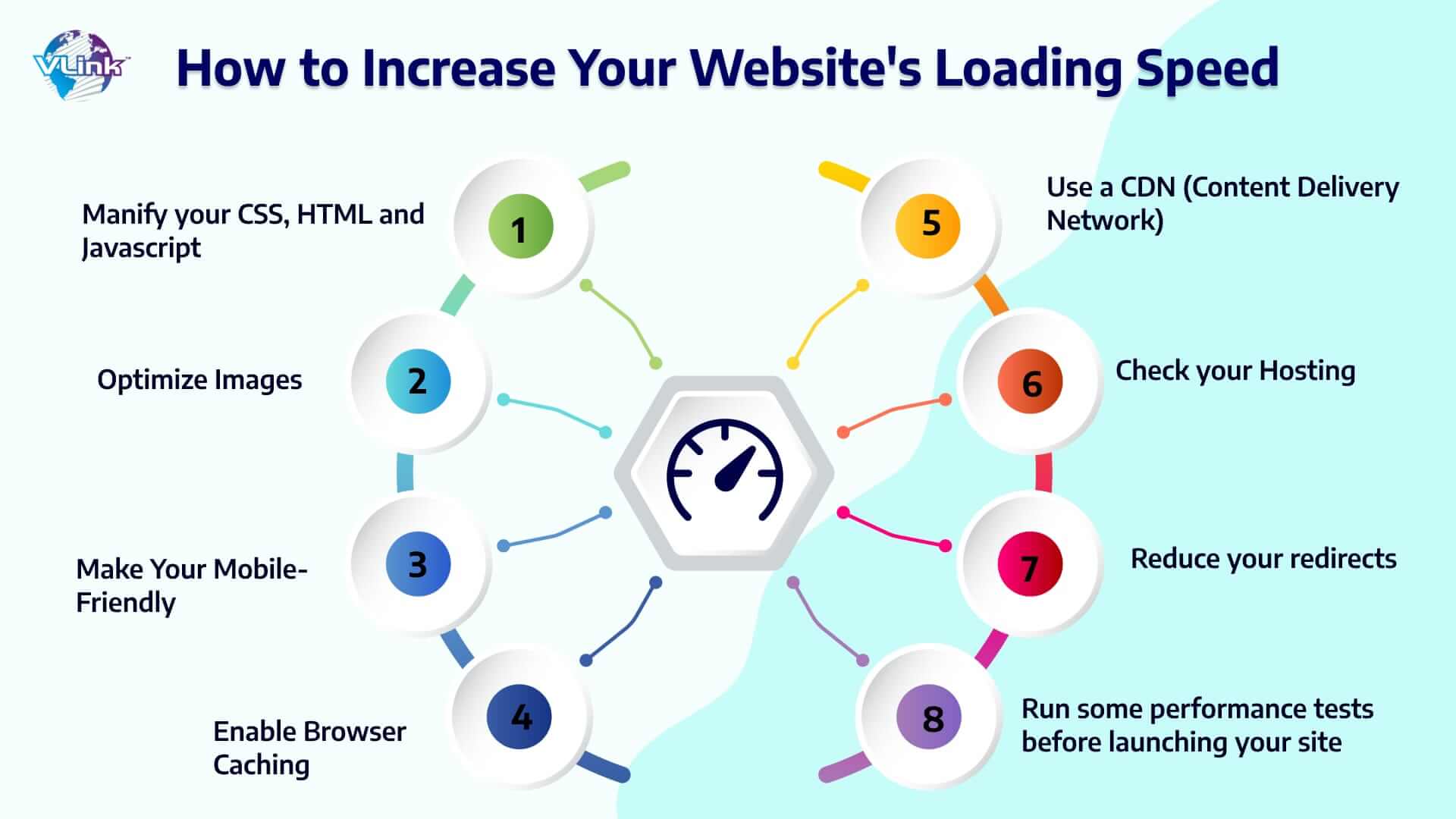
5 Proven Strategies to Optimize Your Website’s Loading Speed
How to Optimize Your Website’s Loading Speed is a crucial aspect of ensuring a positive user experience and improving your website’s performance. In today’s fast-paced digital world, users expect websites to load quickly and efficiently. Slow loading times can result in high bounce rates and lower search engine rankings. To help you enhance your website’s loading speed, we have compiled 5 proven strategies that you can implement to optimize your website and provide a seamless browsing experience for your visitors.
One of the most effective ways to optimize your website’s loading speed is to minimize the number of HTTP requests. Each time a visitor accesses your site, their browser sends a request to the server for each element on the page, such as images, scripts, and stylesheets. The more requests that need to be made, the longer it takes for the page to load. To reduce the number of HTTP requests, you can combine multiple files into one, use CSS sprites to combine background images, and remove unnecessary plugins and scripts.
By minimizing HTTP requests on your website, you can significantly improve its loading speed and enhance the user experience. This optimization technique not only helps your site load faster but also boosts its search engine ranking. Search engines like Google prioritize websites that load quickly, so by reducing HTTP requests, you can potentially improve your site’s SEO performance and attract more organic traffic. Implementing this strategy can have a positive impact on both user engagement and search engine visibility.
Enabling browser caching is a crucial strategy to optimize your website’s loading speed. When a user visits your website, their browser stores certain elements of your site, such as images, CSS files, and JavaScript files, in its cache. This means that when the user visits your site again, the browser can quickly retrieve these elements from the cache instead of re-downloading them from the server. By enabling browser caching, you can significantly reduce the time it takes for your website to load for returning visitors.
From an SEO perspective, faster loading speeds are essential for improving user experience and increasing the likelihood of visitors staying on your site longer. Search engines like Google prioritize websites that offer a seamless user experience, including fast loading times. By implementing browser caching, you can improve your website’s performance metrics, such as page speed and time to first byte, which can positively impact your search engine rankings.
In simple terms, enabling browser caching helps your website load faster by storing certain elements in the visitor’s browser so that they don’t have to be downloaded again each time the user visits. This not only enhances user experience but also boosts your SEO efforts by improving loading speeds and overall site performance.
Optimizing images is a crucial step in improving your website’s loading speed and overall user experience. Large, uncompressed images can significantly slow down your site, so it’s essential to resize and compress them before uploading. This not only reduces the file size but also ensures that the images load quickly and smoothly on all devices.
From an SEO perspective, optimized images can also help improve your website’s search engine rankings. By using descriptive file names and alt text that includes relevant keywords, you can make it easier for search engines to understand the content of your images and index them properly. This can ultimately lead to increased visibility and traffic to your website.
In simple terms, optimizing images involves making them smaller in file size without compromising on quality, and adding relevant keywords in the file names and alt text to improve SEO. By following these steps, you can enhance your website’s loading speed, user experience, and search engine visibility.
Reducing server response time is a critical aspect of optimizing your website’s loading speed. When a user clicks on a link to access your website, the server needs to process the request and deliver the content back to the user’s browser. A faster server response time means that this process happens more quickly, resulting in a faster loading time for your website.
To improve server response time, you can start by optimizing your server configuration and reducing the amount of time it takes for the server to process requests. This can involve minimizing the number of plugins or scripts running on your website, optimizing your database queries, and ensuring that your server has enough resources to handle incoming traffic efficiently.
By focusing on reducing server response time, you can create a better user experience for visitors to your website and improve your SEO rankings. Search engines like Google prioritize websites that load quickly and provide a seamless browsing experience for users. By optimizing your server response time, you can make sure that your website is not only fast but also more visible to potential customers searching for relevant information online.
Using a Content Delivery Network (CDN) is a powerful strategy to optimize your website’s loading speed and boost its SEO performance. A CDN is a network of servers distributed across various locations worldwide, each storing static content like images, videos, and scripts from your website. When a user visits your site, the CDN delivers this content from the server closest to their location, reducing the distance data needs to travel and thus speeding up loading times.
From an SEO perspective, a CDN improves your website’s performance by enhancing user experience and reducing bounce rates. Since page speed is a crucial ranking factor for search engines like Google, a faster-loading website is more likely to rank higher in search results. Additionally, CDNs help to reduce server load and bandwidth usage, leading to better overall website performance and increased organic traffic. By implementing a CDN, you can provide a seamless browsing experience for users while improving your site’s visibility and search engine rankings.
Minifying CSS, JavaScript, and HTML is a crucial step in optimizing your website’s loading speed. By minifying these files, you are essentially removing any unnecessary spaces, comments, and characters that are not essential for the code to execute. This streamlines the code, making it more compact and efficient for browsers to process, resulting in faster loading times.
From an SEO perspective, faster loading speeds are highly beneficial as they contribute to a better user experience. Search engines like Google prioritize websites that offer a seamless browsing experience, and speed is a significant factor in determining search rankings. By minifying your CSS, JavaScript, and HTML files, you are improving your website’s performance, which can positively impact your SEO efforts.
In simple terms, minifying CSS, JavaScript, and HTML is like decluttering your website’s code. Just as clearing out unnecessary items from your home makes it more organized and efficient, minifying your code helps your website run smoother and faster. This optimization not only benefits your site’s loading speed but also enhances its SEO ranking potential.
One key strategy to optimize your website’s loading speed is to eliminate render-blocking JavaScript and CSS. When a webpage loads, the browser has to download and process all the necessary JavaScript and CSS files before it can display the content on the screen. If these files are render-blocking, it means that the browser is forced to wait until they are fully loaded and processed before it can continue rendering the page. This delay can significantly slow down the loading speed of your website, leading to poor user experience and lower search engine rankings.
To improve your website’s loading speed and boost your SEO efforts, it is essential to identify and eliminate any render-blocking JavaScript and CSS files. One way to do this is by optimizing your code and organizing your files in a way that allows the browser to load them more efficiently. You can also use tools like Google’s PageSpeed Insights to identify render-blocking resources on your website and make the necessary adjustments. By removing these obstacles, you can help your website load faster, improve user experience, and increase your chances of ranking higher in search engine results.
Prioritizing above-the-fold content is a crucial strategy for optimizing your website’s loading speed. Above-the-fold content refers to the portion of a webpage that is visible without scrolling, typically including the headline, images, and key information. By focusing on loading this content first, you can ensure that visitors see the most important information right away, leading to a better user experience and potentially higher engagement.
From an SEO perspective, prioritizing above-the-fold content can also improve your website’s search engine rankings. Search engines like Google prioritize websites that provide a positive user experience, including fast loading times and easy access to relevant information. By optimizing your above-the-fold content for speed and usability, you can help search engines better understand and index your site, potentially leading to higher visibility in search results.
In simple terms, by making sure that the most important information on your website loads quickly and is easily accessible at the top of the page, you can improve both user experience and search engine optimization. This can ultimately lead to more traffic, higher engagement, and better rankings for your website.
Implementing lazy loading for images is a great way to improve your website’s loading speed and enhance the user experience. In simple terms, lazy loading means that images on a webpage are only loaded when they are visible to the user. This helps in reducing the initial load time of the page, as only the images that are currently in the viewport are loaded, while the rest are loaded as the user scrolls down.
From an SEO perspective, lazy loading can also benefit your website. By reducing the overall page load time, it can improve your website’s performance and user engagement metrics, which are important factors for search engine rankings. Additionally, faster loading pages are more likely to be favored by search engines, resulting in higher visibility and potentially better rankings for your website.
Overall, implementing lazy loading for images is a simple yet effective strategy to optimize your website’s loading speed and improve its SEO performance. By prioritizing user experience and reducing unnecessary load times, you can create a faster and more engaging website that is likely to attract more visitors and rank better in search engine results.
Monitoring and analyzing your website’s performance is crucial for ensuring that it loads quickly and efficiently. By regularly checking key performance metrics such as page loading speed, server response time, and overall site responsiveness, you can identify any bottlenecks or issues that may be causing delays. Tools like Google PageSpeed Insights and GTmetrix can help you track these metrics and provide insights on how to improve them.
Analyzing website performance data allows you to pinpoint areas for optimization, such as optimizing images, reducing server requests, or minifying CSS and JavaScript files. By addressing these issues, you can improve your site’s loading speed, which is not only important for user experience but also a key ranking factor in search engine optimization (SEO). A faster-loading website is more likely to rank higher in search results, leading to increased visibility and traffic.
In conclusion, monitoring and analyzing your website’s performance is essential for optimizing its loading speed and improving SEO. By regularly tracking key metrics and addressing any issues that may be slowing down your site, you can enhance user experience, boost search engine rankings, and ultimately drive more traffic to your website.




